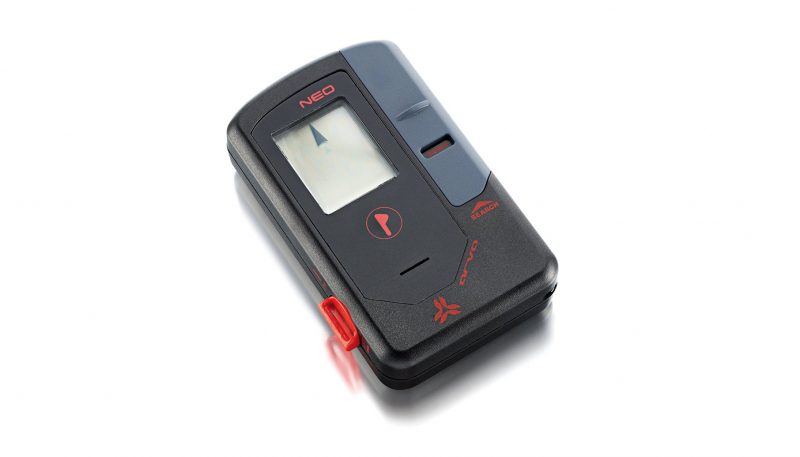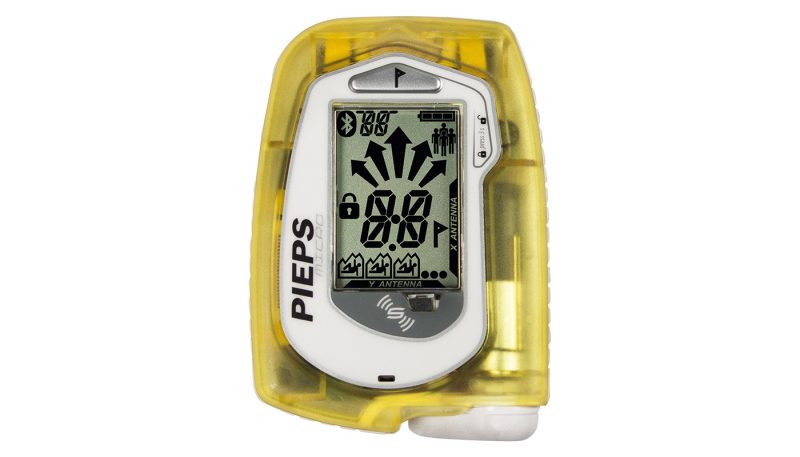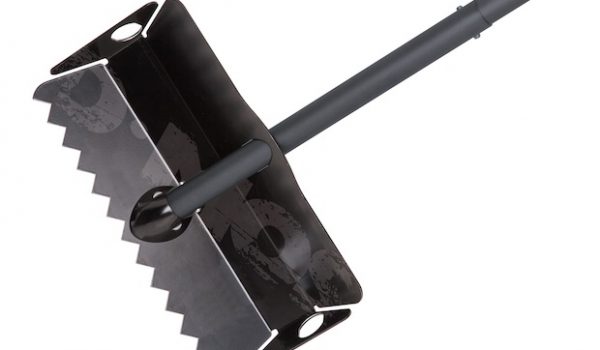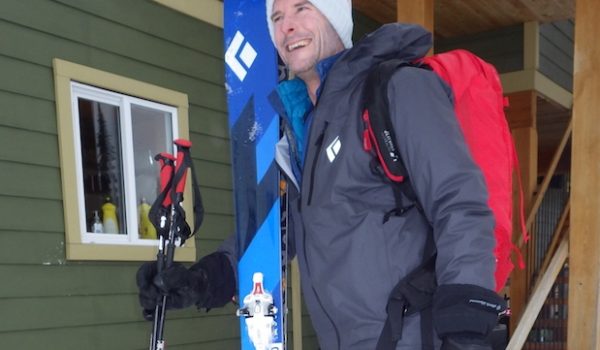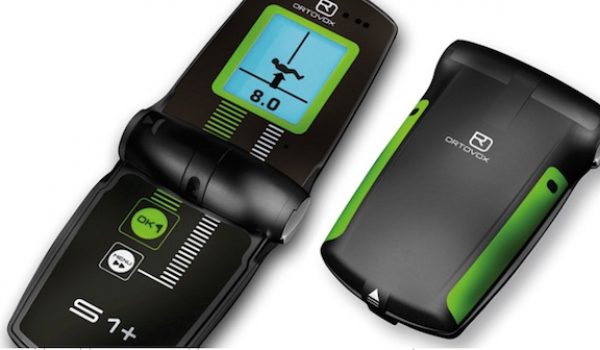Introduction
With a bit of knowledge and respect – plus an invisible dose of luck – skiers, snowshoers and mountaineers can avoid the necessity of being involved in an avalanche rescue. But in case you miss a clue, or your luck simply runs dry, you need to carry a beacon, probe and shovel plus enough experience to wield them with skill. It’s called a beacon because it acts like a homing device, or a radio beacon, so you can be found if you get buried in an avalanche. It’s also called a transceiver – part transmitter to send out the signal, part receiver to follow the signal to the buried.
As a searcher a beacon can get you close, but you still need a probe to pinpoint the victim’s exact location so you can dig them out with the shovel.
You’re probably reading this article because you’re in the market for an avalanche transceiver and you want to know what the best one is. To be honest, no matter what brand or model it is, they’re all pretty good and effective provided you practice regularly. The problem is we don’t practice enough. Therefore, part of a beacon’s value is how well it helps overcome our lack of practice.
Navigation
The purpose of this avalanche transceiver overview is not to tell you what the best beacon is, but give you some background and insight into understanding how they work and what goes into determining the rating for a given beacon in terms of range, speed and ease of use. Technicalities that are too laborious to explain within each review will be done here; terms like coupling, pulse rate, pulse width, flux lines, marking or masking a signal, and though it sounds obvious – speed. Once you know the ins and outs of beacons you can determine what mix of features are the best for you.
Beacon Physics
Though they are often called beacons in casual conversation they are formally known as avalanche transceivers alternately operating as either a radio transmitter, to be found, or a precisely tuned radio receiver, to conduct a search. Applying digital technology has made a simple analog based radio transceiver system easier to use. However, due to the physics of the signal there remain inherent limitations for speed and accuracy which reinforces the necessity of practice.
Send Mode
When you initially turn on an avalanche beacon, it defaults to sending out a steady stream of pulsed radio signals at 457 kHz roughly every second. The pulse is only on for about a tenth of a second. The fact that the signal is only “on” once per second means that a beacon in search mode can only “hear” the signal intermittently, though repetitively. Thus, it can only update location once a second, and it needs to be constantly updated.
To send the signal, the beacon uses a single dipole antenna to transmit a pulse of radio waves at 457 kHz. This frequency is low enough that the electromagnetic waveform it emits is hundreds of meters long. By comparison, the wavelength of light is measured in angstroms, billionths of a meter. With light, we can see sharply. In the case of beacons, the large wavelength means we have a fuzzy view at best. Because the locations of the signal “seen” or “heard” is less than a wavelength away, the magnetic component of the signal dominates. This means that the receiver is detecting a magnetic flux line which is curved in nature and, more importantly, penetrates snow.
Search Mode
To detect the signal, the receiving beacon uses two antennas initially, and three when the signal detected is less than 5 meters away. When the beacon picks up a signal, one or both of the antennas have aligned with the flux line and coupled the energy detected. When the antenna is parallel with the flux line it is optimally coupled. When it is crossways, or 90 degrees to the field but in the same plane, it is said to be “poorly coupled.” That’s why there are two antennas, at a right angle to each other in the same plane. If one is well coupled, the other will be poorly so, or vice versa. The third antenna is to account for a vertical orientation of the signal, which is common as you get close.
There is another condition, what I call “worst coupling.” This is when the signal is perpendicular to the horizontal plane defined by the two main antennas so neither detects much of anything, but a vertical antenna could, if it were big enough, but typically it isn’t, so it doesn’t. The exception to this is Arva’s Axio, new for 2017, with a vertical antenna that extends beyond the depth of the beacon housing.
These three antennas are used to detect signal strength and direction. Some beacons, like those from Barryvox and Ortovox have additional magnetic sensors to help determine the 3D spatial orientation of the signals detected. In addition, every beacon uses proprietary software to recognize and follow individual pulse trains based on pulse width and the rate of repetition. Some, like Ortovox’s S1+, even catalog the shape of the pulse to help distinguish between multiple signals. Thankfully modern microprocessors can do a lot of computations in fractions of a second, but they still only give updates just once a second.
It is important to note that the distance and direction shown are typically a weighted average of not just the most recent pulse, but of the previous one or two as well. Thus, while a searcher’s screen may update in cadence with the ongoing pulse trains of the buried beacon(s), the accuracy for that specific location could be off significantly, depending on how close and how fast you are moving. If you want real-time updates when you’re in close, you want a beacon that can switch to analog mode (Barryvox Pulse or S, Ortovox’ S1+, or Arva’s Axio), or BCA’s Tracker 3 with digital real-time updates (no delay, less averaging).
Thus, while modern avalanche transceivers do an amazing job of getting us close, to locate a buried beacon precisely you must physically probe for it.
Range Matters Far Away
Besides keeping your cool, the thing you want the most at the beginning of a rescue is a beacon with a lot of range, allowing you to pick up the victim’s signal sooner. Manufacturers will tout their maximum range but this may not be the most important criteria. Not only is a manufacturer’s claim of maximum range prone to marketing optimism, there is a difference between merely detecting a signal and locking on to it.
The ability to “hear” a signal is based primarily on the sensitivity of the receiver, and how well one of the two horizontal antennas couples with the flux line. The more parallel either antenna is to the flux line, the more energy it will pick up. Ideally either antenna works, but in practice one antenna, the one along the long axis of the receive beacon tends to give a favored response and greater range when oriented parallel with the transmitter’s antenna. Because you don’t know the orientation of the victim’s beacon it is still recommended to swivel your beacon in three dimensions when you’re first trying to acquire a signal.
Max Range & Search Strip Width (aka Bandwidth)
Max range occurs when the searcher’s longest antenna is parallel with the transmitting beacon’s antenna. The signal is still quite weak at this point, compounded by the fact that the signal is curved, not straight. Thus, at max range the distance shown may be 90 percent accurate, but the direction is probably not the direct path to the target, but along the flux line, so it may seem to point away rather than at the signal’s origin. Some beacons may be more accurate compared to a measured scale but this is not as important as recognizing the obvious indicator of getting closer (decreasing distance) or farther (increasing distance) away.
Max range is when a signal can be detected, not necessarily locked on to. For a digital beacon to “lock-on” to a signal – to be confident it can hear it and deduce any information on it – the receiver needs to hear more than a single beep. To give “accurate” distance information most transceivers require at least two in a row, some three. To stay “locked-on” you need to be close enough to detect an ongoing train of pulses. If the signal is so weak it only “hears” the transmitting pulse intermittently, it can’t provide any reliable information save the “possibility” of a signal being in range. Keep in mind that if you only get a momentary blip, that means you’re at least 40 meters (Tracker 3, Ortovox 3+), maybe 50 (Pieps DSP, Ortovox S1+), or 60 (Arva Neo, Barryvox Pulse/Element), maybe even 70 meters away (Arva Axio or Barryvox S) and there’s no time to waste standing still. Keep hustling in the direction of the signal.
To be fair, there is a correlation between max range and the range a beacon locks on, with the latter being the reliable max range. In the reviews that I author, I set the max range of a beacon to be the distance it can consistently detect and lock on to a signal, with bonus points for longer max range values because, in any given scenario it might really lock on further away.
However, the range that really matters is the Search Strip Width, sometimes referred to as the Bandwidth. This is the range the beacon is more or less guaranteed to pick up a signal within. In other terms, this refers to the range possible with worst case coupling – wherein the field lines and receive antennas are orthogonal. This is the no miss zone. Inside this range, if there is a signal the beacon will pick it up.
If you need to sweep an avalanche path, either solo or within a group, this is the diameter of a circle around you where the beacon will hear a signal. If everyone has the same beacon, this is the distance between searchers during a group sweep, or the distance between successive zig-zags when searching alone.
Mid-Zone – Lock and Run
Once your beacon has locked onto a signal, move as fast as you can in the direction it says to go. Don’t pause and look every second, but correct on the fly as you move. In this zone – between first picking up a signal and until you’re within 10 meters of the buried victim one beacon is as good as another – at least for a single burial. They all give fairly accurate distance and direction. Some may be more accurate on distance, and there are differences among manufacturers as to which ones separate and identify multiple signals better than others, but they all prioritize to the strongest signal, and all will get you within 5 meters as fast as you can get there.
Besides distance and direction, all beacons give audible cues as well, beeping louder and more furiously as you get closer. The exact pattern for each brand is different, but the results are similar.
Speed Matters in Close
While range matters for picking up a signal as early as possible, precise location of the victim is important to reduce digging time. New statistics indicate you have less than 12 minutes to get air to the victim before it’s too late. In close, until you have a probe strike, haste makes waste.
This is where practice is essential, and to some extent, an understanding of what can be thought of as the speed limit, or response time of your beacon. There are three things to consider with the speed limit.
Moving Speed
The first is your speed. Be like an airplane coming in to land. The further away you are the faster you should move with the beacon waist high. The closer you are the slower you go. In the final meters the beacon should be low, just above the snow surface. Once you are inside of 3 meters you are trying to pinpoint where to begin probing, hopefully hitting the target the first time, by moving slowly (but not too slowly), rhythmically (in time with the signal), and methodically.
Inside of 3-5 meters (depending on which model and what setting you select for pinpointing) digital beacons no longer provide directional information. Whether you turn off direction arrows at 3 or 5 meters is selectable in the configuration menus of all current digital beacons. Inside of 5 meters the flux line orientations are changing rapidly. However, the last known direction clue you had was the direction of a flux line to the transceiver. If you move slowly back and forth along that invisible line you should be able to find the closest point as indicated by the lowest possible distance number and the loudest, and/or shrillest, audio tone.
Pulse Rate
The second speed factor is how fast the beeps are coming, or the pulse rate. You can’t do anything about this except recognize this is as fast as you can go. At this point you want to synchronize your movements rhythmically with the pulses, moving quickly between updates, then holding steady to read the distance. How quickly this reading stabilizes is the next factor affecting speed. If you are swinging the transceiver wildly and/or too quickly the readings you are seeing are probably not accurate because of a third factor, the speed of processing and the algorithm used by the beacon to update the display.
Digital Processing Speed
In this instance I’m not referring to the internal clock rate of the microprocessor, or how quickly the screen updates, but rather the practical reality of how long it takes for a distance reading to settle. Some digital beacons are faster or settle to a final (accurate) reading quicker than others and this is the factor that is rated at Gear Institute when it comes to beacon speed. Some beacons are 90 percent accurate on the first beep, most are more like 70 percent, taking two pulses to be 95 percent steady. By this I mean the number displayed may change again on the second pulse, and again by the third pulse – but not by much. Ideally it doesn’t change but is the same on the first pulse as on the second (or the change is less than 10 percent). Actual distance accuracy isn’t the issue, but more importantly stability. If the number is changing, that means either the distance is changing, which it shouldn’t be if you’re holding it steady, or the microprocessor is averaging the output and it will take a second or two more to settle.
The key is to find the closest point to begin probing. Don’t spend too much time trying to refine location down to the nearest inch. Within a foot or two should be close enough to start probing.
The fastest response you can get is to have real-time processing. BCA’s Tracker 3 is the only transceiver to do digital real-time updates, refreshing the data at the tail end of the transmitted pulse. Beacons that can switch to analog mode deliver an unadulterated real-time update, beeping as it “hears” a pulse with increasing volume based on proximity. It takes a bit of practice, but only a little since volume is intuitive and immediate. It really is real-time because there is zero microprocessor interference. Arva’s Axio does this, as do four generations of Barryvox including the Pulse and new S, plus Ortovox’s current S1+.
Multiple Victim Considerations
One of the more attractive features of most digital avalanche transceivers is their ability to distinguish and guide the user to multiple victims with relative ease. How they keep track of multiple signals varies by brand and model, but the dominant characteristics they all use are the timing of each pulse and its strength.
Imagine for a moment just two different beacons beeping away. They each have their own unique timing, with one beeping 11 times every 10 seconds, the other beeping 9 times in the same period. For awhile the beeps would be staggered, and somewhat distinguishable. However, within two minutes, for about 10 seconds, their beeps would be almost in sync, nearly indistinguishable. If one of them had a longer beep, the overlap could last longer. This is the crux of the problem with interference and why every beacon is prone to getting confused in a multiple victim scenario, even with the added help of a microprocessor and algorithms to help resolve the two signals and keep track of them. Without getting into the minutia – because you don’t need to – it is fairly easy to set up a scenario that is guaranteed to confuse a searching beacon, even with multiple victim locating capabilities. The tendency to become or avoid being confused in this situation is the primary factor affecting the rating of a beacon’s multiple victim capability.
There are a few others, like the ability to ignore, or mark a signal once it is found so that the searcher can then concentrate on the next closest buried victim. They all do a pretty good job of marking the first, strongest signal. What matters isn’t so much the marking, but the ability to then quickly focus on the next strongest signal. Some are faster and more reliable than others and this will be explained in the description of the rating.
I would be remiss if I didn’t also mention that in the case of multiple victims it is important to have a fall back plan, and search methodology like the 3-circle or micro-strip search pattern. Beacons with multiple victim capability can help you save more than one person if the signals can be easily distinguished. If they can’t, for whatever reason, having a search method will help you cut through the confusion and find your friends no matter what.
This should help you decide, based on test results, which beacon is best for you, whether you are a novice backcountry traveler, or an experienced pro looking for an updated piece of avalanche insurance.
One last bit of advice that you already know but bears repeating. One of the best ways to practice is to take an avalanche course. A level 1 AIARE course can help you to avoid getting caught, and give you some much needed experience in the many aspects of a real rescue. Don’t rely on your beacon, get some knowledge between your ears. You won’t regret it.








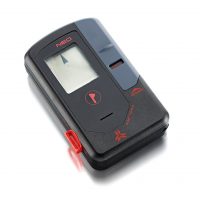
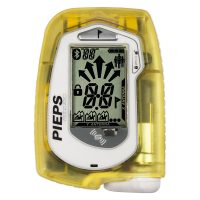
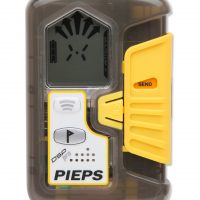
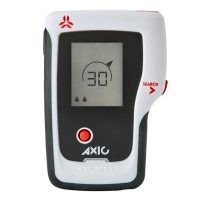
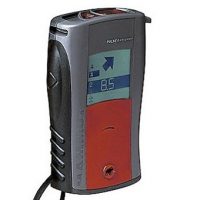
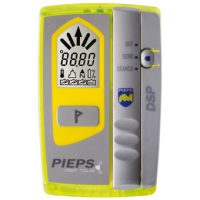
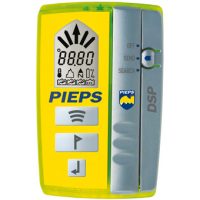

 89
89 